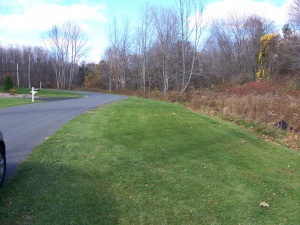
Vegetated Filter Strips
Stormwater
Source Water Protection
Vegetated filter strips are bands of dense vegetation through which runoff is directed. They are best for gently sloping areas, where channelized flow is not likely. Filter strips may treat runoff from roads and highways, roof downspouts, very small parking lots and impervious surfaces.
Need to maintain vegetative cover for controlling erosion and reducing particulates in the runoff; Requires maintenance to remove trash.
Filter slopes should be no less than 1 or 2 percent slope, and no greater than 6 percent. Greater slopes will encourage concentrated flow and flatter slopes may result in ponding. Depending on adjacent land use and traffic, filter strips may require fencing to control destructive access by vehicles, pedestrians, and animals. Filter strips are typically designed to handle flows from 1- to 2-year storm events and are usually not able to reduce flows from larger storms. Top and toe of slope should be as flat as possible to encourage sheetflow. Concentrated flow should not be discharged into filter strips. If flow are concentrated, a level spreader should be included to spread the flow over the entire length of the filter strip. To enhance the effectiveness of the filter strip, install a pervious berm of sand and gravel at the toe of the slope. Select plants that are able to withstand flowing water and both wet and dry periods.
Low. In most cases there is no additional cost associated with establishing filter strips. Typically, all that is required is to direct runoff to an open vegetated area rather than a stormwater system. Costs may range from $0 to $1,200 per 1,000 square feet, depending on site preparation and vegetation.
Provides effective stormwater flood control by slowing down runoff and storing water, including water infiltration into the soil. mproves water quality by filtering pollutants from stormwater (oils, greases, metals, and sediments that can be picked up from paved surfaces) Can be used as a system by itself, or in conjunction with other BMPs. Easy to plan and build. Reduces erosion. May help maintain temperature of receiving waters. Flexible to incorporate existing natural features and a variety of vegetation types. Preserves natural/native vegetation and provides habitat for wildlife. Protects adjacent properties.